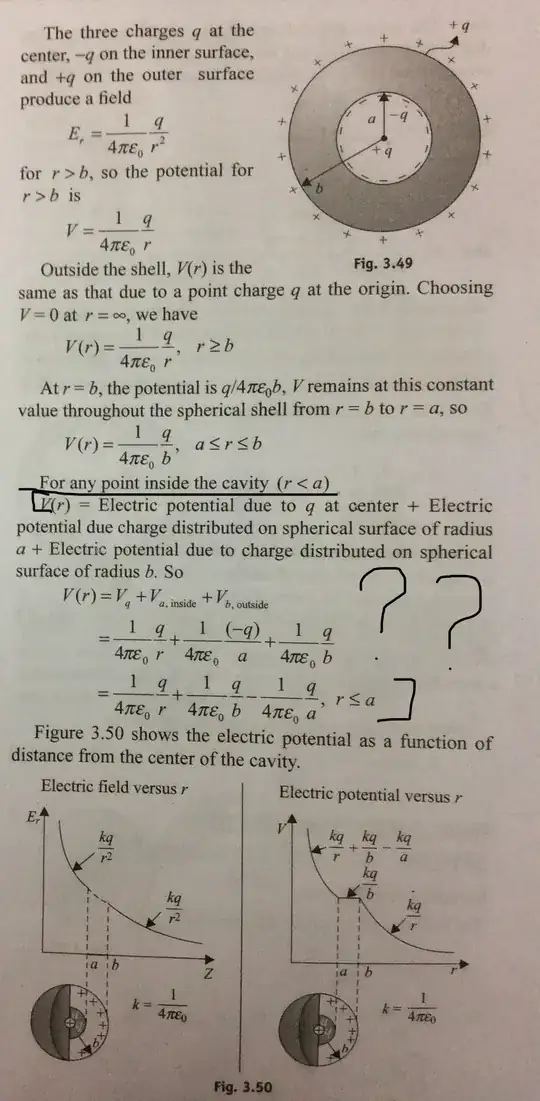When calculating the electric potential inside the hollow portion why are we adding all the electric potentials of the previous cases??? Instead when calculating for other cases i.e the cases before this hollow portion case we only consider the electric potential of that case only.
See the image for more clearer meaning.....
Also please note that only one charge +q is present inside the conducting hollow sphere.